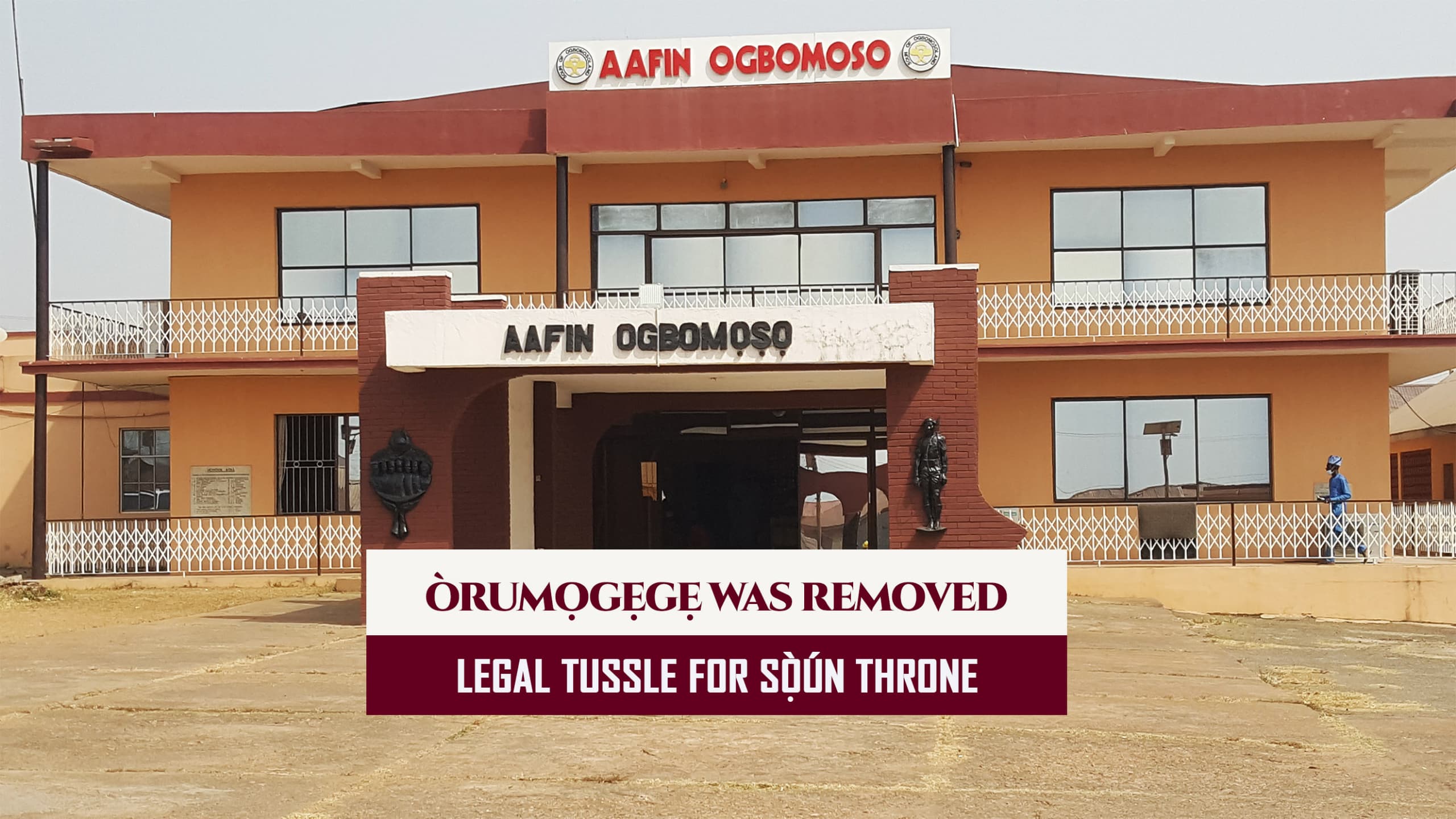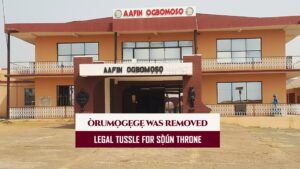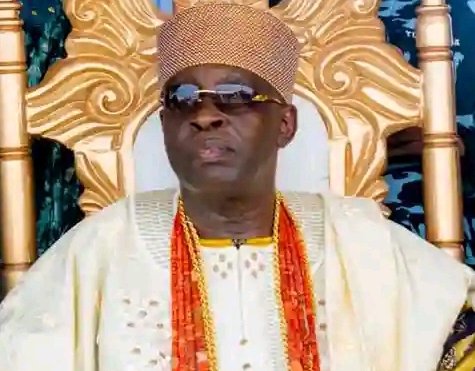DOCUMENTARY REVIEW: Soun Orumogege was removed in Ogbomoso – captures significant trajectory in history (watch video)
Femi Ogunlana
Advertisement
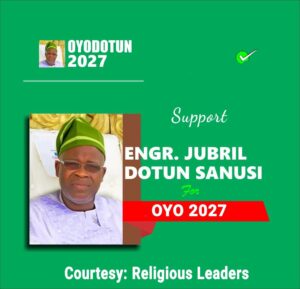
The documentary – “Soun Orumogege was removed in Ogbomoso” – a sixteen minute audio/visual narrative, is a succinct chronicle of event that played out between 1940 and 1944 in Ogbomoso over ascension to the throne of a new Soun of Ogbomoso, which got enmeshed in crisis as a result of interplay of inopportune events and legal entanglement, culminating in deposition of a monarch, Baale Amoo Oyetunde Olaoye, of the Laoye ruling house of Soun dynasty. A significant event in the annals of Ogbomoso, it in fact, altered the course of the history of the ancient city. The documentary vibrantly captures the plots and how it foreshadowed the shape of the future. A documentary as a form of art is apposite for this particular account it attempts to bring into perspective, in that the present generation is increasingly growing averse to reading texts while showing inclination towards moving imagery and audio combined. The complexity entwined in written text is perhaps cumbersome for them. Probably, that explains why the producer, Israel Ayanwuyi, an Ogbomoso-born art cum history buff, opted for the narrative in this form; moreover, hoisting it on YouTube is certain to generate views in millions. It is well-timed if one considers the event portrayed in the work is a mirror of the conflict trailing the enthronement of the reigning Soun of Ogbomoso, His Imperial Majesty Oba Ghandi Afolabi Olaoye Orumogege III, who incidentally is a direct grandnephew of the dramatis personae in the 1940 – 1944 saga.
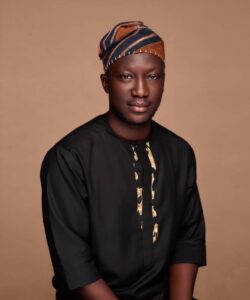
Advertisement
1940, Amoo Oyetunde had been enthroned following the transition of his father, Crown Prince Oyekola Olaoye (few days to installation), even though the action contravened the Soun Chieftaincy Declaration at the time. The Chieftaincy Declaration stipulated then that only “direct sons” of a previous Baale (now Oba or Soun) is eligible for succession. Oyekola, who was the eldest son of Baale Atanda Olaoye Orumogege l, was elected by the kingmakers and his nomination ratified by the British Colonial Government. This was sequel to the demise of Baale Bello Oyewumi Ajagungbade II, who hailed from Gbagun ruling house, in 1940. There are three other recognized ruling houses – Bolanta, Odunaro and Aburumaku – which rotates the stool. But few days to the installation of Crown Prince Oyekola Olaoye, he passed away. This created an impasse. But out of sympathy for the deceased Crown Prince, the kingmakers and the British Colonial Government settled for his son, Amoo Oyetunde, and installed him as Baale. This was however opposed by elements in the town led by the immediate younger brother of Crown Prince Oyekola, Oke Lanipekun, who argued that it’s inappropriate for Amoo Oyetunde to ascend to the throne when his father never was installed, asserting this negated the provision of the extant Chieftaincy Declaration of Soun,, moreover, when the deceased had male siblings. His position was supported by the elites of the day including Professor N.D. Oyerinde, Reverend Aisa Ige, Reverend Adediran and others. They challenged the matter in court, but lost at the lower court and at the West African Appeal Court. However fortune smiled at Oke Olanipekun as the Privy Council in London, Great Britain, overturned the judgments of the lower courts. Thus, in 1944, Amoo Oyeunde was deposed and Oke Lanipekun was installed as Soun Orumogege II.
Advertisement
Interestingly, Oba Ghandi Olaoye Orumogege III is also facing litigation over his crowning, instituted by some of his co-contestants, however, he has the overwhelming support of the people of Ogbomoso including of the leading elites. The matter is presently at the Appeal Court.
CLICK THE PHOTO BELOW TO WATCH THE DOCUMENTARY
The documentary, “Soun Orumogege was removed in Ogbomoso” opens with an introduction of Ogbomoso, its geographical and administrative locations and how it is traditionally administered. It thereafter plunges into the account of the event in focus leading to the installation and de-installation of candidates as recounted above. The narrative is intertwined with interviews which makes it so real. The interviewees are four elderly men who are obviously in their 70s, 80s or 90s but whose memories of the events aren’t in doubt as some of them are eyewitnesses. They include Pa Samuel Jekayinfa, Pa Amos Ajekigbe, Chief Samuel Magbagbeola and Prince Olawole Olaoye. Some of them as observers of the tense events of those dark days unambiguously recall their experiences. As an instance, Pa Jekayinfa, discloses he was 10 years old when Amoo Oyetunde was installed in 1940, and in fact, attended the ceremony in company with his elder brother, whose name he gave as Awonike, and who had to put him on his back because of the large number of ecstatic crowd. Chief Magbagbeola, the present Alapinni of Ogbomosoland, now a nonagenarian and who became a luminary, a leading figure in the city, as he became a close associate of the central figures in the episode also recalls the events vividly, recapping the gripping tale with clarity. Pa Ajekigbe, a Yoruba language scholar, who is still active in the affairs of Ogbomoso and is often consulted as an authority in the history of Ogbomoso also makes valuable contribution ending it with a call on the Laoyes to jettison the “bad” history of litigation now becoming inherent in the family anytime it is their turn to fill the vacant stool just as Prince Olawole Olaoye, the present Mogaji of the Laoye ruling house, affirms the genealogy of the reigning Soun.
The submissions by the four elder statesmen are revealing and a wonderful weave into the storyline; which unequivocally infuse it with authenticity. The documentary also features aerial photos of Ogbomoso metropolis as well as of the Aafin (Palace) of Ogbomoso and of traditional drummers in live performance, all which not only adds to its beauty but enhances its captivation.
In a nutshell, the documentary captures a significant trajectory in Ogbomoso history, and its enchanting presentation embraces logicality, truthfulness and is devoid of emotion or sentiment. Its bilingual production will ensure wider audience connects with the story and helps to further project an aspect of the history of Ogbomoso to the world. The narrator does his job in impeccable English, keeping one in suspense.
However, the production isn’t without imperfections. One, it introduces a confusion in the opening sentence for those not conversant with the evolution of Nigeria, when the narrator begins by saying Ogbomoso is in the Oyo Province of the Protectorate of Nigeria. That might be true at the time of the event in focus but for those unfamiliar with the period, they might be engulfed in quandary, and thus, an elucidation might have allowed for a better understanding. Also, its bilingual production detracts from its quality despite the associated benefits. This is as it is viewed that bringing a member of the Aremo section of the Laoye ruling house, where the Amoo Oyetundes belong, to air the view of the family would have been a welcome addition.
Nonetheless, the documentary is excellent as it largely succeeded in refreshing our memory with an event of our recent past, juxtaposing it with contemporary occurrences.
Advertisement
As an addendum, the controversy generated by the events of 1940 to 1944 as recounted above contributed to opening a new chapter in the evolution of Ogbomoso, as thereafter, the Soun Chieftaincy Declaration, which regulates the succession process, was tinkered with, to allow “direct grandsons” of a former Soun to also have a chance at ascending to the throne as against the former proviso of “only direct sons” (omo ori oko), which actually is to streamline the eligible princes so as to preclude “bastards” from ocvupying the sacred throne. Meanwhile, some have argued that the now subsisting regulation is open-ended and that it allows all males in the particular ruling house with unquestionable link to a former Soun to contest for the throne. Advance in orthodox medicine fostered this thinking on the basis that there might henceforth be Souns whose reign would be unusually long so that by the time it comes to the turn of the family of such Souns again, their direct sons might be old or have perished.
This is actually the situation in the current dispensation; no direct son of Oba Oke Lanipekun Orumogege II was alive, only a grandson, who is close to 80 years, is living, and he did not join in the contest. He only put his son forward. Thus, all who contested were great grandsons of a former Soun, either of Orumogege I or of Orumogege II. Similarly, all who came on the throne after the demise of Oke Lanipekun Olaoye Orumogege II in 1952 were either direct grandsons or sons; they included Soun Olatunji Elepo II (1952 – 1966), Soun Emmanuel Olajide Olayode II (1966 – 1969), Soun Itabiyi Salami Ajiboye III (1971 – 1973) and Oba Jimoh Oladunni Oyewumi Ajagungbade III (1973 – 2021).
The question now is does the extant Chieftaincy Declaration of the Soun Dynasty need amendment in view of the current reality or it should be taken that by “direct grandsons,” as is contained in the law, all in the male line of a former Soun are encompassed?
In the meantime, the documentary – Soun Orumogege was removed in Ogbomoso – is a good one everyone needs to “watch, comment on, and share.”
